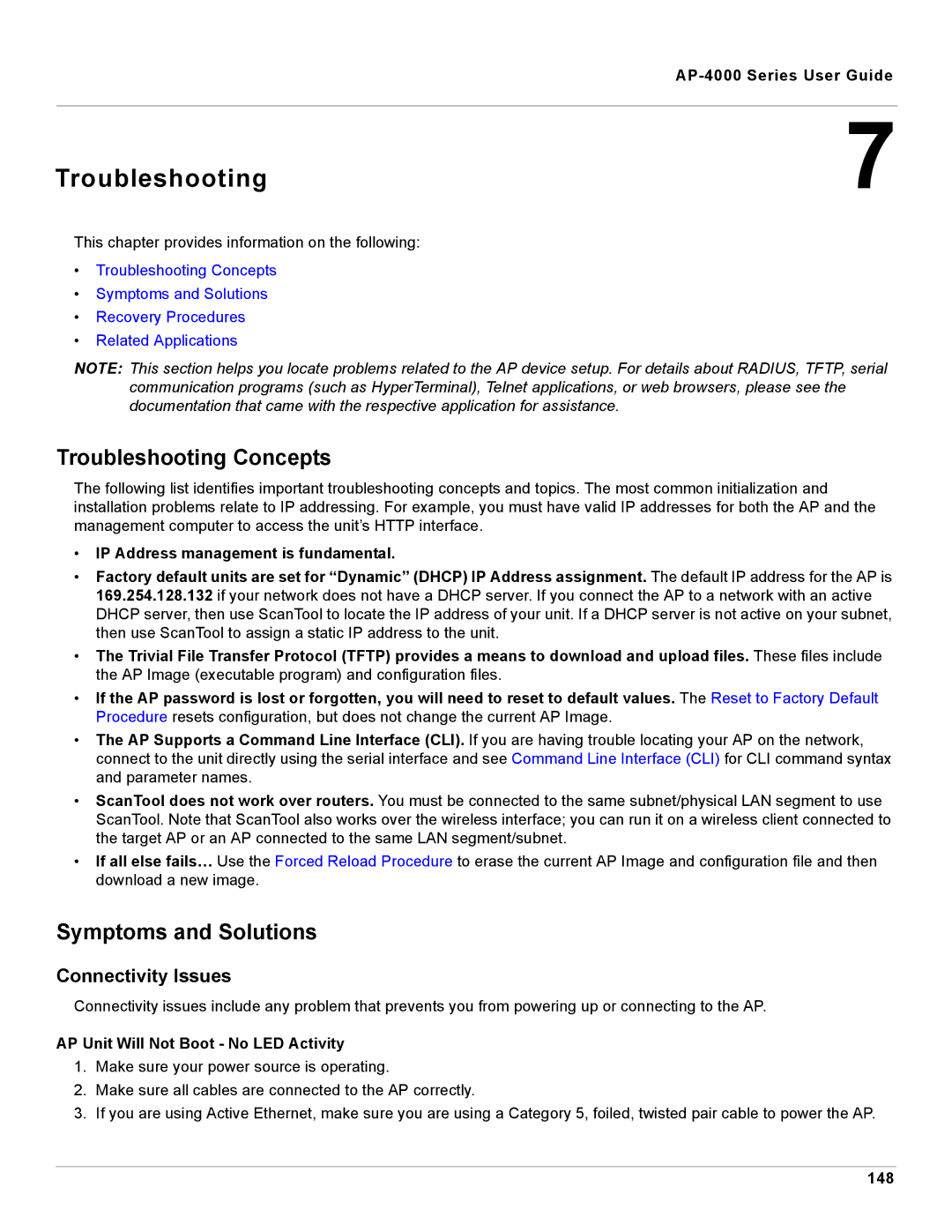AP-4000 Series User Guide
Troubleshooting | 7 |
|
This chapter provides information on the following:
•Troubleshooting Concepts
•Symptoms and Solutions
•Recovery Procedures
•Related Applications
NOTE: This section helps you locate problems related to the AP device setup. For details about RADIUS, TFTP, serial communication programs (such as HyperTerminal), Telnet applications, or web browsers, please see the documentation that came with the respective application for assistance.
Troubleshooting Concepts
The following list identifies important troubleshooting concepts and topics. The most common initialization and installation problems relate to IP addressing. For example, you must have valid IP addresses for both the AP and the management computer to access the unit’s HTTP interface.
•IP Address management is fundamental.
•Factory default units are set for “Dynamic” (DHCP) IP Address assignment. The default IP address for the AP is 169.254.128.132 if your network does not have a DHCP server. If you connect the AP to a network with an active DHCP server, then use ScanTool to locate the IP address of your unit. If a DHCP server is not active on your subnet, then use ScanTool to assign a static IP address to the unit.
•The Trivial File Transfer Protocol (TFTP) provides a means to download and upload files. These files include the AP Image (executable program) and configuration files.
•If the AP password is lost or forgotten, you will need to reset to default values. The Reset to Factory Default Procedure resets configuration, but does not change the current AP Image.
•The AP Supports a Command Line Interface (CLI). If you are having trouble locating your AP on the network, connect to the unit directly using the serial interface and see Command Line Interface (CLI) for CLI command syntax and parameter names.
•ScanTool does not work over routers. You must be connected to the same subnet/physical LAN segment to use ScanTool. Note that ScanTool also works over the wireless interface; you can run it on a wireless client connected to the target AP or an AP connected to the same LAN segment/subnet.
•If all else fails… Use the Forced Reload Procedure to erase the current AP Image and configuration file and then download a new image.
Symptoms and Solutions
Connectivity Issues
Connectivity issues include any problem that prevents you from powering up or connecting to the AP.
AP Unit Will Not Boot - No LED Activity
1.Make sure your power source is operating.
2.Make sure all cables are connected to the AP correctly.
3.If you are using Active Ethernet, make sure you are using a Category 5, foiled, twisted pair cable to power the AP.
